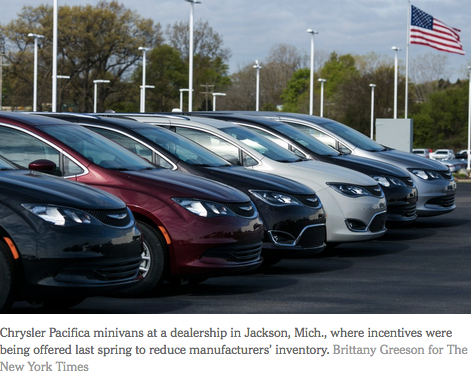Americans tend to favor cars when gas prices are high, and trucks when prices are low, but this time the shift to trucks has been compounded by an increasing preference for taller, roomier vehicles. That has forced carmakers in recent years to shift the production mix rapidly to emphasize sport-utility vehicles, minivans and light trucks.
In December, passenger cars made up just one-third of the market. “In 2012, cars were over 50 percent,” said Ms. Caldwell, the Edmunds analyst. “That’s a big shift in a short period of time.’’
Sales at General Motors last month reflected that shift. The company had a strong December in trucks, selling more than 94,000 full-size pickups between its Chevrolet and GMC brands, almost one-third of its total sales. But its overall sales still fell 3.3 percent from the previous December, as cars like the Chevy Malibu and Impala languished on dealer lots.
For the full year, G.M.’s sales declined 1.3 percent, to 3 million vehicles. At the Detroit auto show, which kicks off later this month, G.M. will unveil redesigns of its full-size pickups.
Fiat Chrysler Automobiles also had a tough month, with sales declining 10.7 percent. Fiat Chrysler has stopped making small and mid-sized cars, and trucks account for 85 percent of its sales total. But a push to cut back on incentives and sales to rental fleets have slowed the company. Total sales for 2017 dropped 8 percent, to 2.1 million vehicles.
Ford Motor, the second largest American automaker after G.M., was one of the few manufacturers to report a rise for December, with sales increasing 1.3 percent. Like G.M., Ford had a big month in pickups, selling more than 89,000 of its F-series models.
But for the full year, Ford couldn’t buck the market’s trend. Its 2017 sales slipped almost 1 percent, to 2.6 million vehicles.




